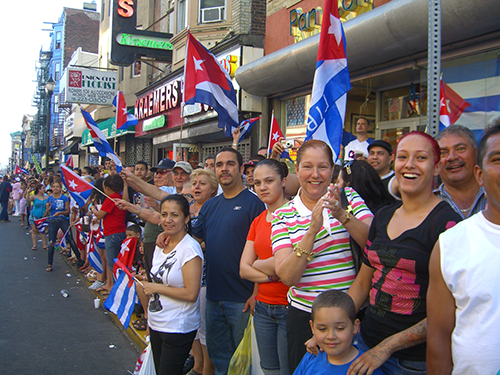Nov 02 2015 Lessons in sharing discretion from Welcome Dayton
 From The Intersector Project Case Library: Empowering the Immigrant Community in Dayton
From The Intersector Project Case Library: Empowering the Immigrant Community in Dayton
The percentage of foreign-born United States residents has quadrupled since the 1970s. Tom Wahlrab, Executive Director of the Human Relations Council (HRC) in Dayton, Ohio, was aware of the challenges immigrants faced building a life in a new country and noticed that many of Dayton’s immigrants, when faced with housing discrimination, did not submit civil rights claims. Recognizing that a number of immigrant groups felt marginalized within the city, HRC initiated a series of conversations with community members including City leaders, police, social service providers, business leaders, immigrant community leaders, and immigrants.
The resulting Welcome Dayton Initiative is a collaborative effort aiming to “promote immigrant integration into the greater Dayton region.” It supports economic development; improved access to education, government, health, and social services; greater equity in the justice system; and arts and culture. Welcome Dayton has publicized the needs of various immigrant communities, helped leverage the assets of existing groups working on immigrant issues, and promoted a cultural shift towards immigrant inclusion.
The process of developing Welcome Dayton is particularly illustrative of a tactic The Intersector Project Toolkit refers to as Share Discretion. Share Discretion refers to the deliberate allocation of decision-making authority according to area of expertise. Assigning authority based on partners’ sector- or issue-specific knowledge allows the collaboration to benefit from the unique expertise of each partner and gives each partner a distinct stake in the collaboration.
The plan for Welcome Dayton was developed through a series of conversations held in 2011 that eschewed hierarchical structures and speeches in favor of conversations with a variety of stakeholders. Tom imagined the Welcome Dayton conversations would be an environment where people could have a discussion rather than hear a speech. The discussions generated greater buy-in from the business and non-profit sectors, as well as from community members. These initial conversations allowed participants to share their expertise from personal experiences in their communities, neighborhoods, or organizations.
Participants self-selected into four sub-committees, applying their sector-specific expertise to draft each of the four sections of the Welcome Dayton Plan: business and economic development; local government and the justice system; social and health services; and community, culture, arts, and education. Once the Welcome Dayton Committee was established in 2013, members contributed knowledge based on what their communities, organizations, and institutions were already doing to aid immigrant inclusion. The Committee created a 19-point “visioning process” that focused the Welcome Dayton Committee’s goals. These points isolated specific ways that Welcome Dayton could be resourceful within the four priority areas of the Welcome Dayton Initiative.
Welcome Dayton is now a community-led government initiative with a standing committee within the Human Relations Council and a full-time employee dedicated to coordinating the initiative. It exists as a platform to encourage and support immigrant inclusion in Dayton’s society, emphasizing a cultural shift towards awareness and integration. The City government, business, and non-profits have individual responsibilities to immigrant groups that coalesce through Welcome Dayton to create a more structured and comprehensive approach to immigrant issues. In 2013, the US Chamber of Commerce recognized Dayton as one of seven enterprising cities, citing Welcome Dayton’s role in the city’s success.
